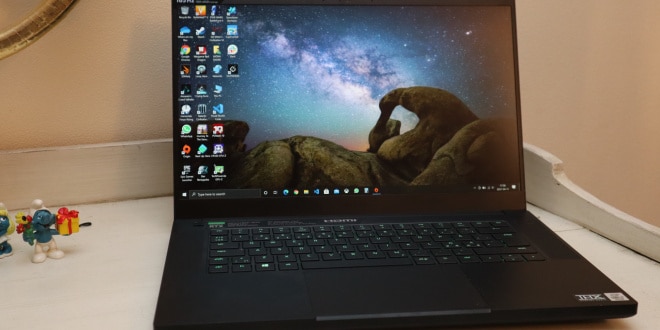The Nvidia RTX 3070 Laptop GPU
Nvidia used to give some of their laptop parts the Max-Q moniker. Basically, any GPUs without it were closer to their desktop counterparts while Max-Q-GPU’s have been cut-down versions. This has changed with the Series- 30-GPU’s and now the manufacturers must specific the TGP (Total Graphis Power), the boost-speed as well as which Max-Q features the GPU.
TGP is the total power budget that the GPU and its subsystems have access to. Very simply said a high TGP will mean more performance. This also means that a RTX 3070 with a high TGP in some cases can outperform a RTX 3080 with a low TGP.
Not all manufacturers list this on their product pages but Razer do. The RTX 3070 in this laptop has access to the following features:
- NVIDIA GPU Boost™
- NVIDIA Optimus™ Technology
- NVIDIA Whisper Mode
- NVIDIA Resizable BAR
The GPU in the Razer Blade 15 Base Edition has a TGP of 95W (85W + 10W Dynamic Boost 2.0) which is at the low end. There are a bunch of laptops with TGP up to 140W but they are usually bigger with more fans so I feel this is a compromise that Razer has made to keep the laptop thin.
| Egenskap | RTX 3080 | RTX 3070 | RTX 3080 (mobil) | RTX 3070 (mobil) |
| CUDA-kärnor | 8 704 st. | 5 888 st. | 6 144 st. | 5 120 st. |
| SM-kluster | 68 st. | 46 st. | 48 st. | 40 st. |
| Minne | 10 GB GDDR6X | 8 GB GDDR6 | 16 GB GDDR6 | 8 GB GDDR6 |
| Minnesbuss | 320-bit | 256-bit | 256-bit | 256-bit |
The difference between a regular RTX 3070 and the laptop RTX 3070 is less CUDA-cores and less SM-clusters.
 Bjorn3D.com Bjorn3d.com – Satisfying Your Daily Tech Cravings Since 1996
Bjorn3D.com Bjorn3d.com – Satisfying Your Daily Tech Cravings Since 1996




